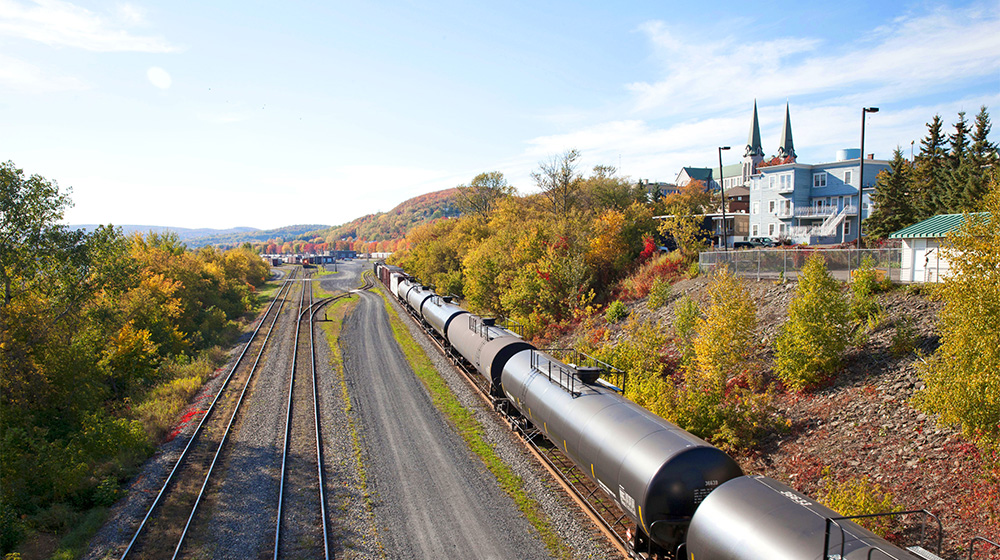Safely Transporting Dangerous Goods
Essential chemicals and petroleum products―used for everything from purifying the water we drink to heating our homes and fuelling our vehicles ― safely travel across our country by rail every day. Getting these goods from point A to point B safely is a priority for Canada’s railways. Of the hundreds of thousands of dangerous goods carloads that move by train each year, 99.99 per cent reach their destination without a release caused by an accident—a safety record the industry is working hard to maintain.

Working to Keep Canadians Safe
Railways are required by law to move dangerous goods, which represent roughly 12 per cent of all rail traffic in Canada. The movement of these products is strictly regulated; the Transportation of Dangerous Goods Act requires railcars carrying dangerous goods to meet strict standards, shipments to be properly packaged, labelled and documented, and employees to be trained to safely handle railcars. Trains carrying dangerous goods are also inspected—not only at their departure point, but also all along their route.
While the vast majority of dangerous goods tank cars currently in service in North America are actually owned by rail customers and leasing companies, the new TC-117 tank car standard will still go a long way towards improving rail safety. The standard requires tank cars carrying flammable liquids to have thicker steel shells than previous models, as well as thermal insulation and full head shields, among other improvements.
Sharing Information and Planning Ahead to Ensure Safety
Railways must have emergency response plans in place, to ensure an immediate and comprehensive response in the event of a transportation incident. By law, they must provide municipalities with regular reports about the products moving through their communities, including the number of unit trains, the percentage of railcars carrying dangerous goods, and the nature and volume of those goods. In addition, Canada’s railways have developed a mobile application—AskRail™—to give emergency responders real-time information about railcar contents.
Since 1999, the Railway Association of Canada’s Dangerous Goods (DG) Team has also helped the association’s members to meet the challenges of handling and transporting dangerous goods. The DG Team provides advice and training to railway personnel, and works with customers, community members and emergency responders to make sure they are prepared to deal with any incidents that do occur. The team helps communities to develop emergency response plans, and trains first responders through the Transportation Community Awareness and Emergency Response (TRANSCAER®) initiative. DG Team members are also on-call 24-hours a day, seven days a week at strategic points across Canada (Toronto, Montreal, and Edmonton) to provide emergency response expertise and support in the event of a railway incident.